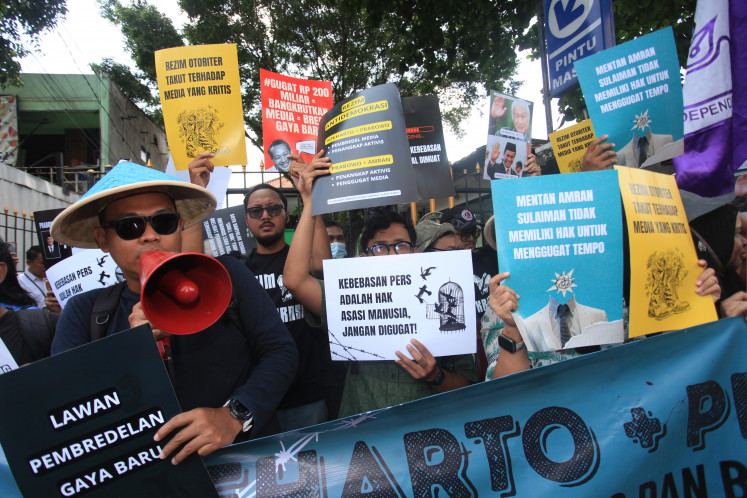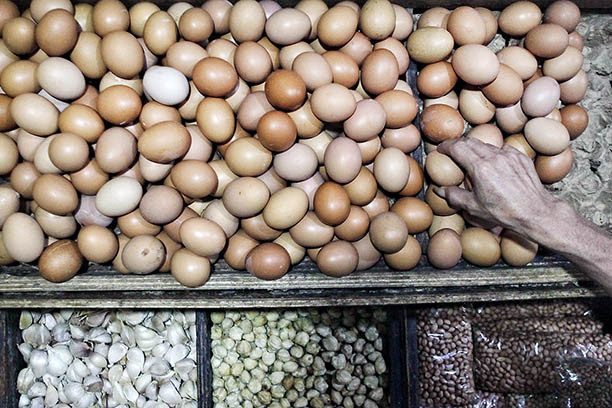Popular Reads
Top Results
Can't find what you're looking for?
View all search resultsPopular Reads
Top Results
Can't find what you're looking for?
View all search resultsBank Indonesia raises GDP forecast to 5.6% this year
The central bank is more upbeat on Indonesia’s economy this year, raising its economic growth forecast to 5
Change text size
Gift Premium Articles
to Anyone
T
he central bank is more upbeat on Indonesia’s economy this year, raising its economic growth forecast to 5.6 percent from 5.2 percent — in line with the government’s estimate of 5.5 percent.
The growth forecast for quarter one was raised to 5.7 percent from 4.8 percent, Bank Indonesia (BI) Deputy Governor Hartadi A. Sarwono said in an email to Bloomberg.
Analysts have said Indonesia’s economy may expand closer to 6 percent this year on stronger trade and investment.
“We have nudged our growth forecast slightly higher to 5.8 percent in 2010 and 6.2 percent in 2011 with a strong export outlook, and an expected revival of investment; although political heat over the Century bailout presents a downside risk,” Citi analyst Johanna Chua said in a statement last week.
Analysts and businesspeople said politics might distract the government from focusing on economic growth. Lawmakers voted 325-212 on March 3 that the bailout, endorsed by Finance Minister Sri Mulyani Indrawati and Vice President Boediono, involved legal violations.
Last year the economy grew by 4.5 percent, lower than the 6.1 percent recorded in 2008, according to the Central Statistics Agency (BPS). Lower growth was partly attributed to a drop in exports and investment following the 2008 financial crisis.
The economy showed signs of recovery during the fourth quarter of last year during which the quarterly GDP growth accelerated to 5.4 percent from the same period last year.
The BPS will announce the growth figure of the first quarter this year in May.
Mulyani said recently that the 5.4 percent growth in the last quarter of 2009 indicated that exports might have recovered “sooner than expected”. But the Finance Ministry has kept its economic growth figure at 5.5 percent in the revised 2010 state budget.
The government expects banks can increase lending this year in support of the real sector.
BI estimates lending growth could expand between 17 percent and 20 percent this year, up from 10.7 percent in 2009.
There have been talks between state-run banks, BI, the Industry Ministry and the ministry of state-owned enterprises (SOE) to encourage banks to gradually cut lending rates in support of the real sector.
State SOE Minister Mustafa Abubakar said state-run banks might cut lending rates by 1 to 2 percent from the existing average rates of above 12 percent, as shown by BI data.
Coordinating Economic Minister Hatta Rajasa said the government would strive to boost the real sector to absorb more labor.
In August 2009, the rate of open unemployment stood at 7.87 percent out of Indonesia’s 114 million workers, the BPS said. The figure declined from 8.39 percent in August 2008.
The number of people living in poverty fell to 32.53 million in March 2009, or about 14.15 percent of the 230 million total population, the BPS said.










